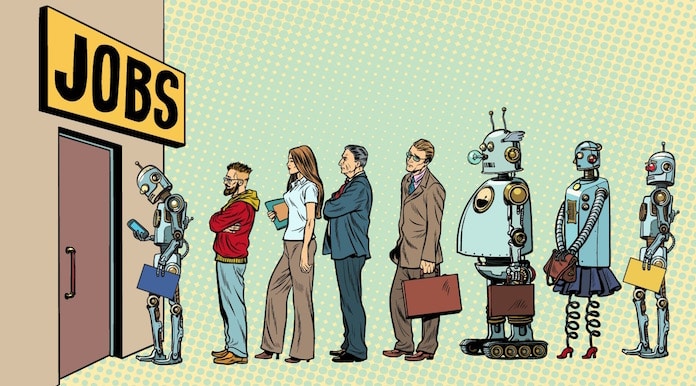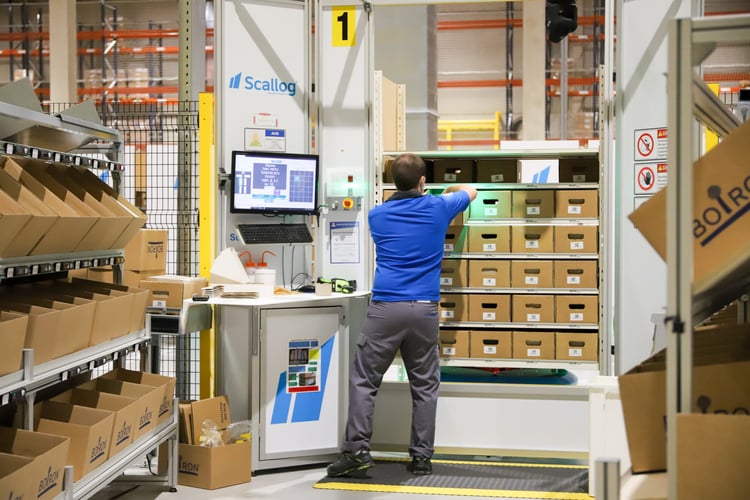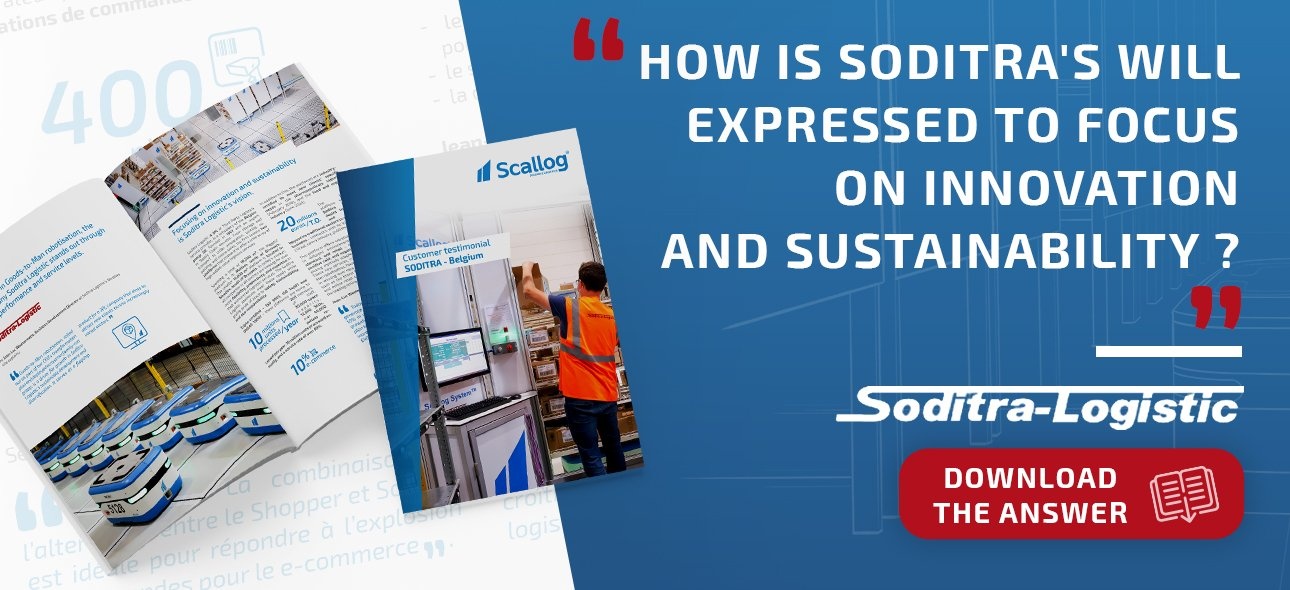We live in an increasingly automated economy. As consumers, we are constantly tracked by digital tools and algorithms. This is an established trend: but is it really progress?
Alarmist reports in the media regularly predict the disappearance of 15, 20 or even 40% of current jobs. These fears are not new. As long ago as the early nineteenth century, Luddites were breaking weaving machinery.
But as the economist Joseph Schumpeter showed, the reality is more complex, because jobs move and evolve. Hence his concept of creative destruction. The World Economic Forum (WEF) has calculated that automation will indeed cut 75 million jobs over 5 years - and at the same time create 133 million new jobs, which is a surplus of 58 million.
But let’s leave the economics aside and instead examine how we can combine efficiency and the improvement of working conditions in the specific context of warehouse robotics.
 Jobs change; workplaces move. That's the concept of creative destruction.
Jobs change; workplaces move. That's the concept of creative destruction.
A better quality of job
When a warehouse manager announces his intention to introduce automation in part of the facility’s ’s intralogistics workflow, he obviously has to take the consequences for the workforce into account, and explain how the project will benefit employees.
Each company is unique and has its own constraints and goals.
So when business is booming, automationj allows a higher workflow to be processed. The priority in this case is to increase the efficiency of the facility in a context of growing workforce.
If the company faces significant seasonal peaks in activity (Christmas, back to school, sales etc.), automation can reduce the need for temporary workers. Temporary workers can often be a liability for permanent teams because they are generally less reliable and, above all, they need to be trained in internal procedures. The risk of error, and even theft, is higher.
Another benefit of automation: new services. In the case of Bétrancourt, automation makes it possible to manage more orders and thus deliver its work clothing directly to the client’s home, rather than obliging the client to pick it up from a drop-off point.
But the main benefit for employees is the improvement in working conditions.
Remember that an order picker covers an average distance of 10 to 15 km every day. Lifting and carrying heavy loads, walking from one zone to another: all this is a burden on the health of employees. MSDs (musculoskeletal disorders) are a problem, of course, but we mustn’t forget that manual handling operations (inside and outside the distribution centre) account for half of occupational accidents!
Picking represents 42% of total distribution centre labour costs. Therefore, reduced picking times allow employees to redeploy to other higher value-added tasks such as supervision and quality control.
Better working conditions, better quality jobs, a structured approach to automation: all these factors can reduce employee churn and improve your ability to recruit personnel. And that’s all the more important when your distribution centre is located outside a major labour catchment area. Younger generations are more and more demanding when it comes to job quality - better working conditions are one way of winning them over.
Combining human and robot capabilities
Now we’ve seen the benefits of automation, we also have to consider its limitations. Automation is not an end in itself, for reasons both economic and human.
Humans are still much more efficient than machines in tasks such as gripping objects. Their ability to identify and respond to abnormal situations is far superior to that of robots, however sophisticated.
And economics alone do not always justify the use of autonomous mobile robots (AMR): as they share the environment with human operators, they are stuffed with sensors and electronic circuitry and subject to very strict safety standards. As a consequence, they are much more expensive and move much more slowly.
At Scallog, our approach is to combine human and machine capabilities as much as possible. To begin with, we conduct a detailed workflow analysis with our customers to identify the points where automation will make the most sense. Not all products are processed in the same way, depending on their size or weight.
The robots operate in a separate zone of the warehouse. Using a simple floor guidance system, they fetch the shelf units to the order picking stations. The “spot-to light“ shows the operator the article’s location on the shelf unit and the “put-to light“ shows where to place it in the order trays contained in the buffer rack. This leaves the operator to concentrate on spotting anomalies regarding the order or inconsistencies in stock.
 Order picking in the Boiron distribution centre - © Scallog / Boiron
Order picking in the Boiron distribution centre - © Scallog / Boiron
Although operators no longer need to move from one zone to another, they still have to perform certain movements and bodily rotations. They are therefore exposed to the risks associated with prolonged standing. To reduce foot pain, our picking stations are fitted with ergonomic anti-fatigue mats.
In the end, however, order picking is always going to require a degree of effort, both physical and mental. We recommend regularly rotating operators around different workstations, performing activities such as the transfer of orders to the packing zone, handling operations in non-automated zones, and order consolidation.
To optimize workstation ergonomics, it’s therefore essential to involve your workforce in the deployment of your automation project. Their active participation will ensure their workstations meet their needs.
Preparing for the future
Reductions in temporary labour, improved working conditions, better collaboration between men and robots: robotics can combine efficiency with respect for people.
No need to envisage an all-robot warehouse or similarly extreme solution: improved job quality and enhanced intralogistics capabilities are not mutually exclusive goals.
The employment market is changing. New generations are comfortable using technology, and are reluctant to accept certain difficult jobs. We offer an intelligent and accessible robotics solution that improves your efficiency while making your distribution centre a more attractive place to work - Olivier Rochet, CEO, Scallog.
The need to improve working conditions becomes all the more pressing in view of the difficulties encountered by the logistics sector in recruiting personnel. Modernizing your distribution centre allows you to stand out in an increasingly demanding field of candidates.
Younger generations do not have the same expectations as their parents. Technology comes naturally to them, and they’re more likely to be fussy about their working conditions. Thanks to a detailed ergonomic assessment, operators can easily get to grips with the working environment offered by Scallog. And because the automation solution we offer is flexible and scalable, you’re also preparing for the future.





Laisser nous votre commentaire